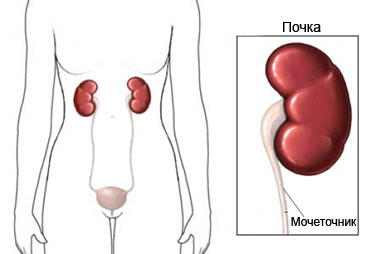Acute tubular necrosis
Description of acute tubular necrosis
Acute tubular necrosis – damage tubular cells (tiny tubular shaped cells) kidney, which leads to acute renal failure. This is a serious disease, which requires medical intervention.

Causes of acute tubular necrosis
Acute tubular necrosis can be caused by:
- Lack of oxygen in the tissues of the kidney due to surgical complications or hemorrhage (bleeding);
- Exposure to toxic substances, antibiotics such as, X-ray dyes, or anesthetics.
Risk factors for acute tubular necrosis
Factors, that increase the likelihood of acute tubular necrosis:
- Early;
- Trauma;
- Complications of surgery;
- Blood transfusion;
- Septic shock;
- Shock;
- Low pressure;
- The disease or liver damage;
- Admission medicines (aminoglikozidy, amphotericin B, cyclosporine, tacrolimus);
- X-ray dye;
Other toxic chemicals:
- Crystals (uric acid, calcium phosphate);
- Myoglobin;
- Impact of hemoglobin.
Symptoms of acute tubular necrosis
The presence of the following symptoms does not always indicate the presence of acute tubular necrosis. These symptoms may be caused by other disorders:
- Changes in urination;
- Dehydration.
Diagnosis of acute tubular necrosis
To diagnose the disease, the following tests:
- A blood test for the presence of the following components:
- urea;
- creatinine;
- electrolytes;
- calcium;
- magnesium;
- phosphorus;
- complete blood count;
- Urine (sodium content, urea, urine osmolality);
- Pochechnaya biopsy – the selection of the sample of kidney tissue for testing (rarely used);
- US – Kidney ultrasound;
- CT scan – type of X-ray, wherein the computer is used, to take a picture of structures in the kidney;
- Magnetic resonance imaging – analysis, allowing to get a photo of the kidney.
Treatment of acute tubular necrosis
In addition to the normalization of food, Treatment may include:
Dialysis
Dialysis – procedure, in which special device functions as a kidney, producing cleaning fluids. It may be necessary in some cases of acute tubular necrosis.
Medications
Some medications (eg, furosemid, ʙumetanid, mannitol, synthetic derivatives of atrial natriuretic peptide) may reduce the need for dialysis in certain people with acute tubular necrosis.
Prevention of acute tubular necrosis
The following measures may help reduce the risk of developing acute tubular necrosis:
- Measures should be taken, to prevent damage to the kidney, caused by dyes, used in X-ray studies (N-acetylcysteine or theophylline).
- No special formulations using certain drugs, such as aminoglycosides or cisplatin, which can cause kidney damage;
- Use calcium channel blockers after kidney transplantation.
